Most people don’t realize this, but there’s a simple, two-step way to grab serious gains in high-yield closed-end funds (CEFs).
I call it the Index Boomerang Effect. And when I say it’s simple, I’m not kidding around.
It goes like this: over time, we can expect a CEF in a particular asset class to perform around as well as the index that represents it (though to be honest, the best CEFs tend to beat their indexes handily, which makes our strategy even more powerful).
But even the best CEFs do lag their indexes from time to time. The key is to spot those times and buy—then ride your CEF to strong gains as the index “pulls” its share price higher.
That’s step 1.
Step 2 comes in when you boost your CEF’s index-generated gains with a nice discount to net asset value (NAV, or the value of a CEF’s underlying portfolio). That’s an easy metric to spot on any CEF screener, including the one you get as part of your membership in our CEF Insider service.
That’s it. Literally two steps to scoring big gains to go along with CEFs’ dividend payouts, whose yields regularly run above 7%.
Our Index Boomerang Effect in Action
Let’s put our strategy in play with a corporate-bond CEF called the Invesco Bond Fund (VBF), which closely resembles the CEF Insider Taxable Bond Index. This index is part of our CEF Insider Index Tracker, which makes our plan even simpler because it lets us instantly compare a CEF to the performance of its index (and other CEFs, too).
The CEF Insider Taxable Bond Sub-Index is going strong in 2021, with a nice 8.5% return so far.
Index Soars in ’21 …

Source: CEF Insider
While most corporate-bond CEFs are following this trendline, some aren’t, including black-sheep VBF, which has seen its total return (based on market price) slide 7.6%.
… But VBF Goes the Other Way
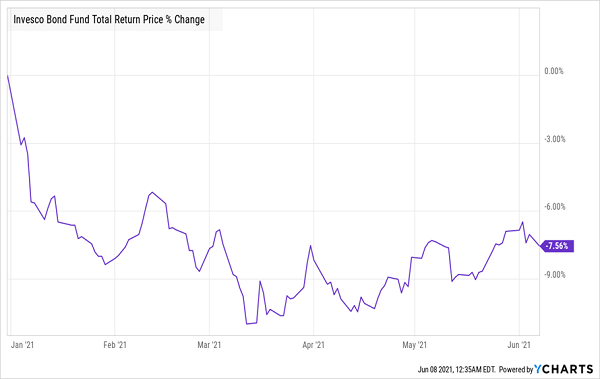
Is this a sell signal? No way! It’s a sign that now would be a good time to buy VBF.
That’s because, when we stretch our view out to a decade, we see that VBF’s 95% total return is about a third above that of the broader high-yield bond market.
Long-Term Outperformance Shows Our Opportunity
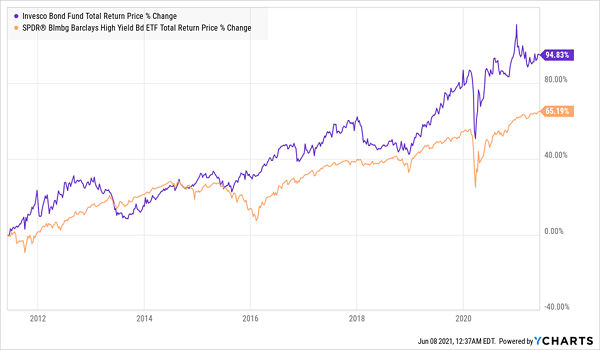
In other words, this recent lagging performance is an anomaly. And our Index Boomerang Effect is powering up to reverse the short-term dip in VBF we’ve seen this year. (Note that I’m using the SPDR Bloomberg Barclays High-Yield Bond ETF [JNK] in the chart above as our CEF Insider Index Tracker has only been active for a couple of years.)
Here’s where the discount to NAV comes in, because the decline VBF’s market price has posted in 2021 stems from emotion-driven investors selling the fund, not management’s performance. On a NAV basis (or as measured by the value of its portfolio), VBF is flat for 2021, as you can see below:
VBF’s Portfolio Is Solid, Despite Its Market-Price Drop
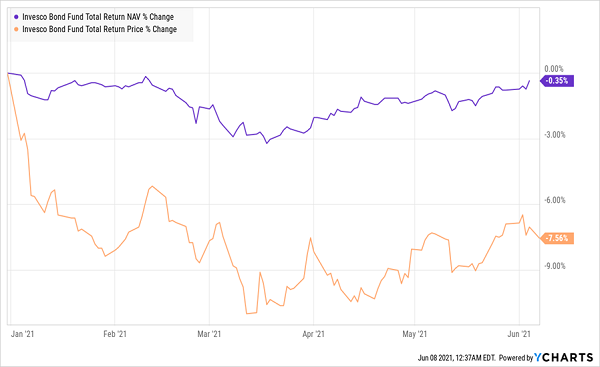
This disconnect has caused the fund’s discount to fall steadily in the last couple of months. But note how it’s been improving more recently.
A Short-Term Sale Opens, and Starts to Close
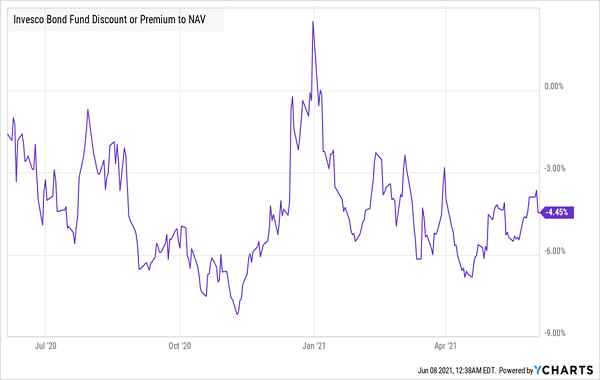
What we’re seeing here is typical of CEFs. In volatile times, a fund can see a selloff on the open market while its portfolio doesn’t budge, resulting in a discount we can take advantage of. And buying CEFs at the right time is crucial. Let’s look at what investors who bought in December 2011, when VBF was trading at a 9.9% premium to NAV, saw next.
Poor Timing = Poor Returns
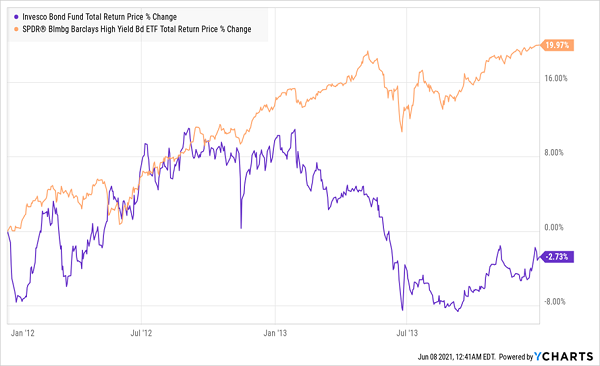
Two years of zero profits, while the typically underperforming index returned 20%!
Now look at investors who bought in February 2012, just a little over a month later, when VBF traded at a 3% discount (which, while a bargain, isn’t as good of a deal as VBF is today):
Right Timing = Beating the Market
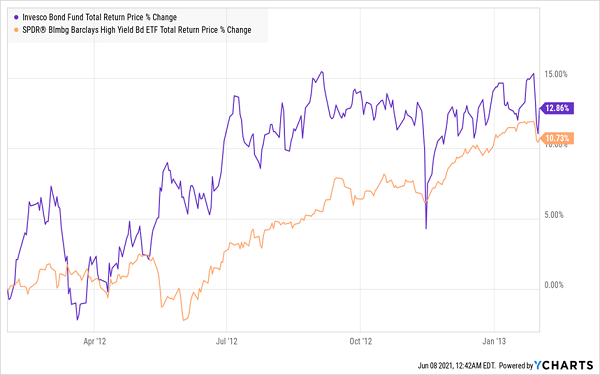
This trick doesn’t just work for VBF; it’s a time-tested method of extracting profits from the inefficient CEF market. This is because, over the long haul, CEFs will inevitably return to, or exceed, a trendline similar to the index they represent, especially if the CEF has been underperforming that trendline due to a widening discount to NAV.
And we’re seeing this happen not just with VBF, but with over a hundred CEFs of the 500 or so on the market today. That gives us plenty of opportunity to amplify our profits, lock in long-term income and buy at discounts, even when the market is heating up.
5 “Index Boomerang” CEFs for Big Gains (and Big Yearly Dividends) in the 2020s
We’re not stopping there, because I’ve got 5 more “Index Boomerang” picks waiting for you in a new Special Report I’m sharing with the public today.
It’s called “5 Hidden Funds the ETF Companies Don’t Want You to Know About,” and the 5 CEFs it contains all trade at unusual discounts—so much so that I’m calling for 20%+ price upside from each of them in the next 12 months. And they all throw off huge dividends, too, with an incredible 7.3% average yield between them.
These “hidden” bargains are terrific options these days, with an inflated stock market and chances to grab big dividends thin on the ground.
I’ll give you instant access to this unique report, which gives you the full story on these 5 funds (including why the ETF industry wants to keep them off your radar) right here. Your report brings you all the need-to-know info—names, tickers, dividend histories, best-buy prices and more.

Recent Comments